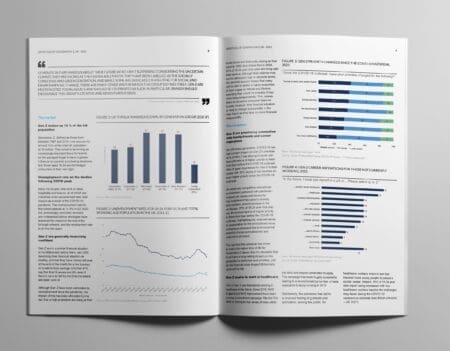China's department store retail market doubles in value over past six years
While department stores in China have faced ever more increasing competition from other formats and retail channels in recent years – new research from Mintel reveals just how much this sector has flourished in China.
Reflecting the increased wealth of Chinese consumers – and the increased disposable income this has brought with it – Mintel’s research reveals that China’s department store retail market doubled in value in the last six years, from RMB 315 billion in 2007, to RMB 683 billion in 2012 – its supermarkets and hypermarkets sector grew by almost the same amount, from RMB 527 billion in 2007 to RMB 1.109 billion in 2012.
Indeed, around a third (30%) of urban Chinese shoppers now shop at a department store once a week or more, with a further quarter (24%) shopping in them 2-3 times a month.
Matthew Crabbe, Director of Asia Pacific Research at Mintel, said:
“Department stores in China have not only survived within the context of the country’s recent rapid economic development, but many have flourished, including several department store chains. Yet the market space they fill increasingly has to compete with other retail formats, such as specialist chains, hypermarkets and supermarkets, and growing numbers of new destination shopping malls and retail parks. This is making the competitive landscape increasingly difficult for department stores, and much harder for them to sustain their levels of interest among China’s shoppers.”
“However, the department stores sector is continuing to undergo adaptation to the changes in the Chinese retail market brought about by the rapid growth in the domestic consumer economy. This is a process that will need to continue as the domestic economy grows, the retail market diversifies and the influence of online retailing becomes stronger. Department stores cannot rest on reputation alone, and need to continually innovate in order to sustain consumer interest. In such an increasingly competitive market, it will be the companies that are quick to adapt and innovate that will survive, while many stores and chains that fail to keep up with the changes will almost certainly go under.” Matthew continues.
Driving this growth, Clothing tops the list of items purchased at department stores with 92% of those who shop in them purchasing a clothing item. This is followed by Accessories (77%), Personal Care Products (71%), Houseware Products (60%) and Footwear (72%). In addition, Menswear items (68%) just edges Womenswear Items (67%) in terms of next most purchased items.
Looking to the future, online retail also offers strong growth potential – with some 97% of urban Chinese consumers now claiming to browse online department stores, but demand for items appears to vary. Over the past six months, half (50%) of consumers who shopped at online department stores purchased shoes, almost one in two (48%) womenswear and 45% menswear – a further 35% purchased cosmetics, skincare and fragrances and 35% sports clothing, footwear and equipment. Highlighting the importance of online apparel to the e-commerce market, Mintel’s research also reveals that online apparel retailing as a proportion of total China apparel market value has increased market share from just 2% in 2008 to 21% in 2012 – growing marketing value from
-
Mintel StoreGet smart fast with our exclusive market research reports, delivering the latest data, innovation, trends and strategic recommendations....View reports
-
Mintel LeapMintel Leap is a revolutionary new AI-powered platform that will transform your research process....Book a demo







































